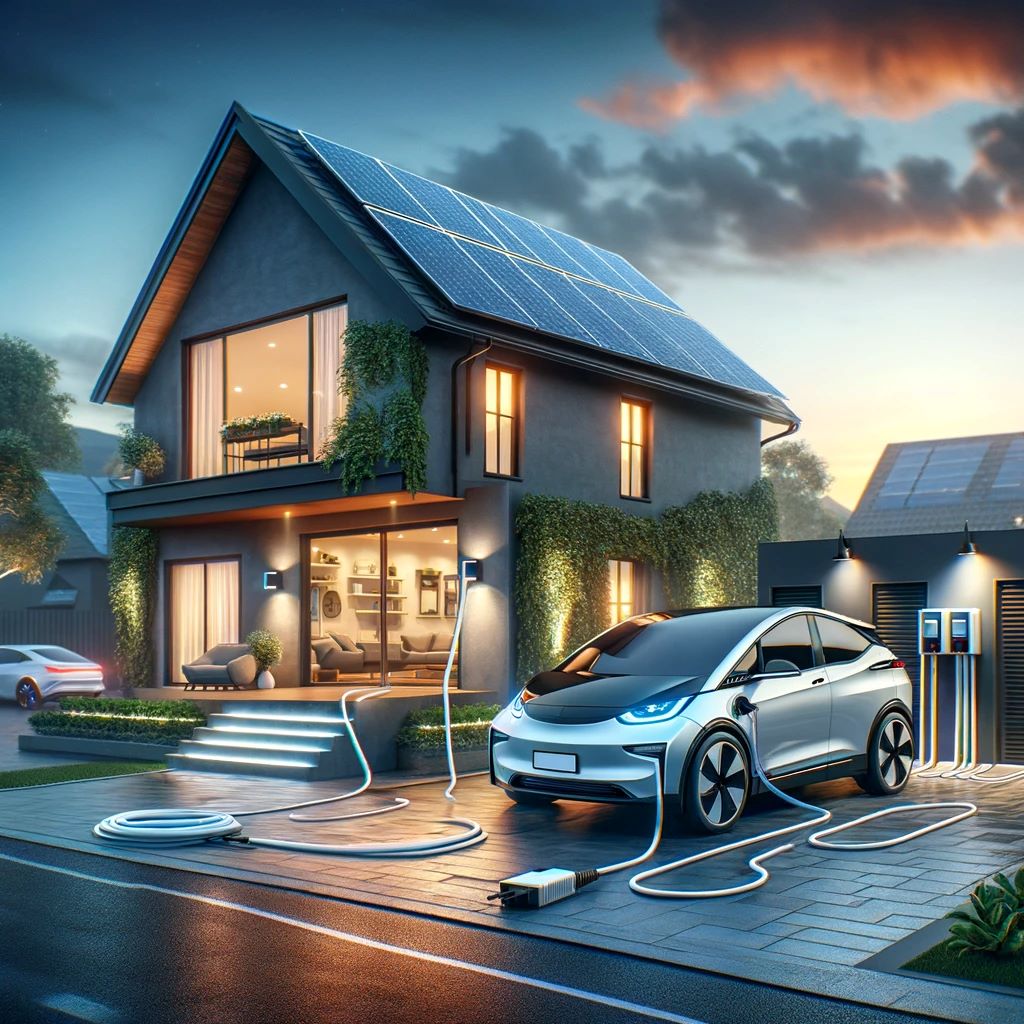
Vehicle-to-Home (V2H) systems enable electric vehicle (EV) batteries to supply power to a home or business, offering benefits such as reduced energy costs, increased energy resilience, and support for integrating renewable energy into the grid.
To implement V2H technology, a bidirectional charger and a compatible EV are required.
The setup involves connecting the EV and your home’s electrical panel, potentially requiring additional equipment like a smart meter or a Home Energy Management System (HEMS).
V2H is part of the broader Vehicle-to-Everything (V2X) concept, which also includes Vehicle-to-Grid (V2G) and Vehicle-to-Load (V2L) technologies.
Bidirectional charging, a key component of V2H, allows EV batteries to both receive and deliver energy to and from an external power source.
This innovative approach enhances the utility of EV batteries beyond mere transportation use.
It requires specialized charging systems that can manage the energy flow in both directions, safeguarding the battery’s health.
Different forms of bidirectional charging include V2G, where energy can be sent back to the power grid; V2L, which allows the EV to power appliances or other electric devices; and Vehicle-to-Vehicle (V2V), where energy can be transferred between EVs.
A notable aspect of V2H is its capacity to provide backup power during blackouts, effectively acting as a household battery system.
This is especially beneficial when combined with rooftop solar installations, enhancing self-sufficiency.
However, for V2H to function, apart from a compatible bidirectional charger, additional equipment like an energy meter at the main grid connection point and grid isolation equipment for backup operation are necessary.
The benefits of V2H and other bidirectional charging methods include the potential to sell electricity back to the grid (V2G), reduced energy costs by using EVs as a power source for homes (V2H), and emergency power supply during blackouts.
Furthermore, V2L allows EVs to become portable energy sources for various applications.
While promising, V2H technology faces challenges such as the high cost of systems, lack of standardization, and regulatory barriers.
Despite these challenges, the technology is rapidly evolving, driven by the increasing adoption of EVs, declining costs of bidirectional chargers, and growing interest from utilities and other sectors.
Estimate of wide scale adoption
The widespread adoption of Vehicle-to-Home (V2H) technology and other forms of bidirectional charging is on the horizon but faces several challenges before it becomes mainstream.
General Motors has announced plans to make V2H bidirectional charging technology available across its portfolio of upcoming Ultium-based electric vehicles by the 2026 model year, indicating a significant move towards mass-market adoption within the automotive industry.
However, the transition to commercial and widespread use of V2H technology is still in the early stages, and there are notable challenges and barriers to its implementation at scale.
The Smart Electric Power Alliance (SEPA) has highlighted the potential of bidirectional charging to transform electric vehicles into flexible resources for power systems, acting both as a load and an energy resource.
This dual capability could create new revenue streams and grid services value for both customers and utilities, supporting peak shaving, storing renewable generation, and providing ancillary services, among other benefits.
Despite the promising aspects, there are significant hurdles to overcome, including the need for utility approval and interconnection studies, agreements for grid-tied discharge, and the development of software to manage the interactions among vehicles, electric vehicle supply equipment (EVSE), utilities, and aggregator providers.
Additionally, the process of utility interconnection has been identified as one of the most significant challenges in deploying bidirectional charging systems at scale.
Many utilities are still designing their bidirectional charging interconnection process, and those without existing stationary storage programs may need to create entirely new processes or adapt rooftop solar interconnection processes.
In conclusion, while the potential for V2H and other bidirectional charging technologies to contribute significantly to energy management and grid services is clear, the path to widespread adoption involves overcoming technical, regulatory, and operational challenges.
Collaborative efforts among industry stakeholders, including automakers, utilities, and technology providers, are crucial for realizing the full benefits of these innovative technologies.


